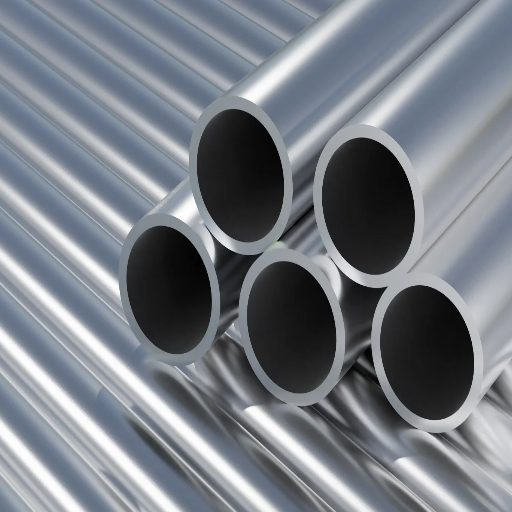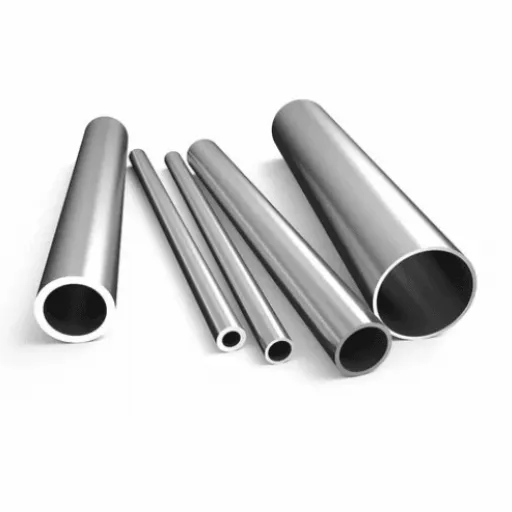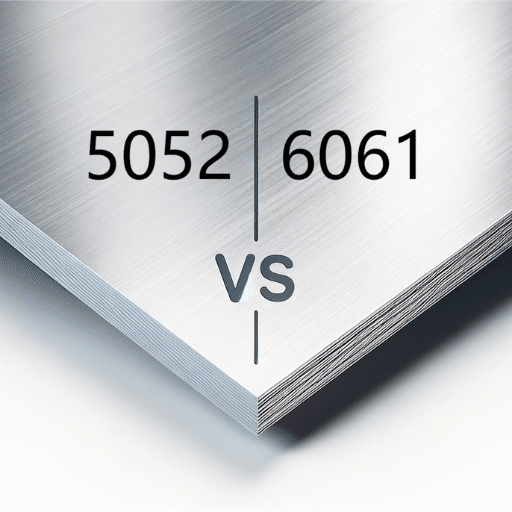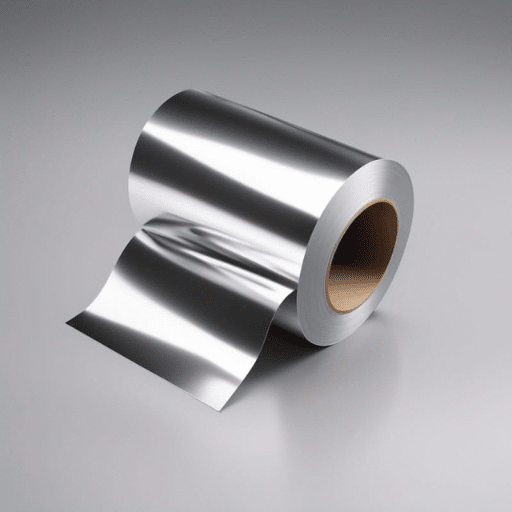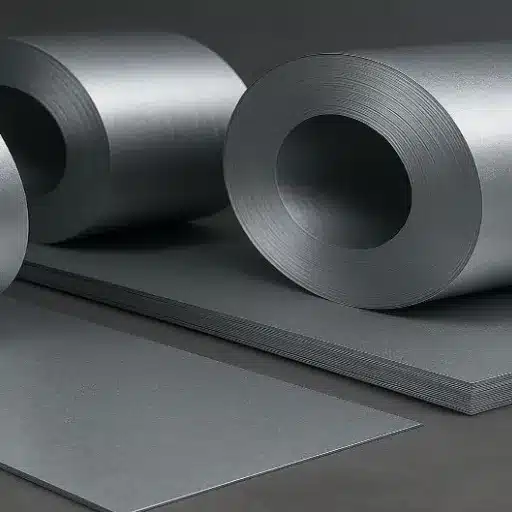Stainless steel and aluminum are two of the most commonly used metals across industries, known for their durability, versatility, and unique properties. However, understanding the nuances between these materials is crucial, especially in terms of corrosion resistance, application suitability, and performance advantages. This article dives deep into the comparative analysis of stainless steel and aluminum, with a focus on how each material behaves in different environments, their strengths, and potential drawbacks. Whether you’re an engineer sourcing materials for construction, a designer creating lightweight products, or a professional navigating the challenges of material compatibility, this guide will arm you with the knowledge required to make informed decisions.
Material Properties
Strength and Durability of Stainless Steel and Aluminum
Stainless steel is famous for its alacrity toward strength and durability, being an iron-based alloy with chromium, nickel, and often molybdenum. These Contenders-in-groups impart corrosion resistance and strength to stainless steel, making it a steel of the utmost grade to be employed wherever the application needs to go through high machining loads, such as in industrial machinery, construction supports, and medical devices. Under normal environmental conditions, stainless steel highly resists deformation, surface wear, and fatigue.
Aluminum stands second, following stainless steel, and has more surface wear against deformations, which calls for a surface finish to be applied. In contrast to stainless steel, aluminum is slightly more prone to wear out by surface abrasion. Otherwise, it provides good resistance to rust under non-acidic or chloride-free environmental conditions because of its natural oxide coating.
Durability-wise, they differ further, depending on the environmental conditions and requirements of the application. Stainless steel can withstand long exposure to severe temperature conditions, corrosive substances, and heavy mechanical loads without being compromised in its integrity. Aluminum, on the other hand, is best applied in fields and uses that require weight reduction as an essential element and where extreme conditions remain secondary considerations. Finally, the choice between stainless steel and aluminum must be carefully balanced against the need for strength, durability, and weight, about the actual operational requirements.
Corrosion Resistance: Comparing Stainless Steel and Aluminum
Since stainless steel contains chromium, a passive oxide layer develops on its surface. The oxide layer protects the metal against rust and corrosion when exposed to moisture and oxygen; therefore, stainless steel is an excellent choice for environments that harbor humidity, saltwater, or chemical contact. Certain grades of stainless steel, such as 316 stainless steel, are more resistant to highly corrosive chloride environments.
Aluminum, while being corrosion-resistant, depends on its natural oxide layer for protection. The oxide layer protects aluminum in less aggressive conditions. However, such resistance may deteriorate in extremes such as strong acids or alkalis or in the presence of dissimilar metals, resulting in galvanic corrosion. Anodizing and other forms of protective coatings can muffle this corrosion, but additional maintenance and cost should be expected.
Comparing the two materials, stainless steel will be the better choice for a long-term application in a harsh environment where exposure to extreme conditions, chemicals, or salt water will be anticipated. The selection is best for aluminum when applications require weight savings and can afford less severe operating conditions. The most appropriate choice should always go with the specific application, environmental factors, and budget limitations.
Weight Considerations: Aluminum vs. Stainless Steel
Aluminum weighs close to a third of stainless steel, thereby making it considerably lighter when considered for equal volumes.
|
Aspect |
Aluminum |
Stainless Steel |
|---|---|---|
|
Mass |
~1/3 of steel |
Heavier |
|
Density |
0.0986 lb/in³ |
Higher |
|
Durability |
Lower |
Higher |
|
Usage |
Lightweight |
Heavy-duty |
Applications Across Industries
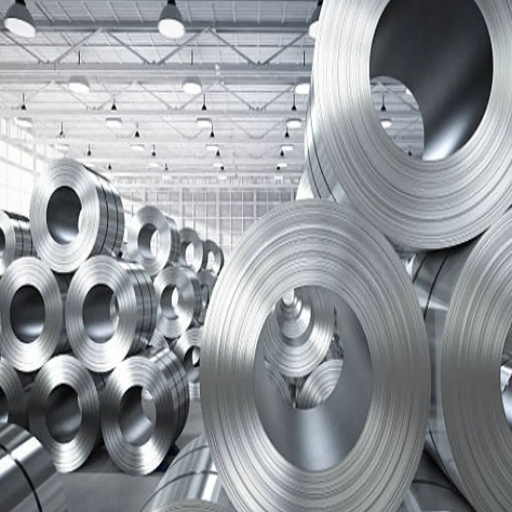
Construction: Using Stainless Steel and Aluminum Together
The main reason for integrating stainless steel and aluminum in construction is to ensure that both complementary properties meet structural efficiency and cost factors. In the construction industry, stainless steel is generally used wherever strength requirements above average corrosion resistance and life expectancy are considered outdoors or in exterior cladding systems. Aluminum, on the other hand, is selected when lightweight fabrication ability and resistance to atmospheric conditions are preferred; these would be window frames, roofing panels, and curtain walls.
The combination of these materials leads to corrosion problems; hence, synchronous planning must be undertaken, for when the metals touch directly, corrosion by galvanism occurs because of their different electrochemical properties. To prevent such corrosion, the metals in contact should be separated by a non-conductive material such as rubber gaskets or polymer coatings. Moreover, modern fastener technology using insulated fasteners or adhesives has enhanced hybrid material joint performance while adhering to the structural requirements.
Employing hybrid materials can reduce total project weight by 20%, based on maintaining safety and durability criteria. This further supports sustainability initiatives, as both metals can be recycled, thereby lessening construction projects’ carbon footprint. To fully utilize the benefits of combining stainless steel and aluminum in today’s construction techniques, all primary considerations must be weighed during the design stage. These variables would include load distribution, expansion coefficients, and maintenance from time to time.
Automotive Industry: Benefits of Aluminum and Stainless Steel
The use of aluminum and stainless steel in the automotive industry has been limited due to the inability of the products to develop while balancing in-between performance, safety, and sustainability. Aluminum features an excellent strength-to-weight ratio, thus creating vehicle lightness, with direct implications on the fuel economy and emissions. For instance, a 10% weight decrease in a vehicle can improve fuel economy by 6-8%. Stainless steel represents something else: with its highest durability and corrosion resistance, it realizes an excellent choice for structural components, exhausts, and other highly stressed parts exposed to aggressive environmental conditions.
Proper combinations of the two materials allow manufacturers to optimize vehicle performance without compromising safety. For instance, aluminum can be used in body panels that are non-structural to reduce weight, while stainless steel will be used in specific components that require high impact resistance. This hybrid material solution also gave a dinner punch to EV development, where these materials are needed to lighten the weight of battery systems to improve vehicle range.
In addition, sustainability objectives increasingly exert a profound impact on the automotive industry; both aluminum and stainless steel are suitable from a recycling perspective. Aluminum recycling consumes a lot less energy compared to its primary production; stainless steel is, however, largely made up of recycled materials and offers an economic loop. These qualities sit well with stringent regulations and consumer preferences for environment-friendly vehicles, thus rendering the use of aluminum and stainless steel an indirect factor in automotive design, justifiably presented as ahead of time.
Aerospace Applications: Material Choices and Performance
The aerospace industry demands materials that withstand extreme environmental conditions, with very high strength-to-weight ratios, able to meet lofty safety and stringent performance criteria. The choices of material define the functioning, fuel efficiency, and structural integrity of any aerospace structure. Some of the important materials used in aerospace applications are listed below with their associated properties:
- Aluminum Alloys: Aluminum alloys present the advantages of being light, corrosion-resistant, and having good strength-to-weight properties; hence, it is one of the commonly used materials in aerospace design. It has great ductility and fabrication is fairly easy, giving it wide applicability in aircraft fuselages, wings, and other structural components. For example, a widely used 7075 aluminum alloy in aircraft achieves tensile strength of about 572 MPa.
- Titanium Alloys: These have great strength, corrosion resistance, and can resist high temperatures, thus being used in jet engines and airframe components. Ti-6Al-4V is one of the most widely used titanium alloys in aerospace and with strengths up to about 950 MPa that maintain their mechanical properties at high temperature.
- Composites: These materials, such as carbon-fiber-reinforced polymers (CFRPs), are known for extreme stiffness with light weight and high fatigue resistance. These features are well brought into use in present-day aircraft like Boeing 787 and Airbus A350, where CFRPs constitute more than 50 percent of the structural weight. This composition goes a long way in improving fuel efficiency and performance.
- Stainless Steel: Stainless steel for aerospace use is often considered for parts that are subjected to high stress and temperature. Its high tensile strength and oxidation resistance are good for high-load structures and fuel tanks. 15-5 PH stainless steel, for example, has a yield strength greater than 1050 MPa.
- Superalloys: Superalloys, generally nickel or cobalt base, are basically meant for extreme operating conditions of very high temperature and pressure. These materials come in handy in jet engines where temperatures are in excess of 1,600°F (871°C). Nickel-based superalloys like Inconel 718 retain their structural integrity and resist oxidation even under severe thermal shock.
Each material plays a very important role in the development of aerospace technology in ensuring safety, performance, and sustainability under demanding operational conditions. The incorporation of these materials into aerospace systems keeps changing with the progress made in material science and engineering.
Corrosion and Galvanic Issues
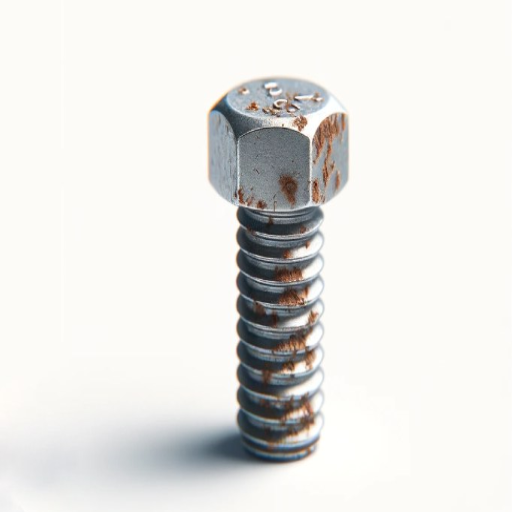
Understanding Galvanic Corrosion Between Stainless Steel and Aluminum
Galvanic corrosion takes place when a couple of different metals, for example, stainless steel and aluminum, enter into electrical contact with each other in the presence of an electrolyte, usually referred to as water with salts or conductive impurities. The process is driven by the electrochemical potential difference between the two metals, thus constituting a galvanic cell. Aluminum, being the more anodic metal, acts as the sacrificial metal, preferentially undergoing corrosion, while stainless steel, being cathodic to aluminum, remains protected. The extent of corrosion depends on various factors such as the conductivity of the environment, the relative surface areas of the two metals, and the composition of the electrolyte.
With increasing salinity in an environment, such as in marine environments, the galvanic corrosion rate increases commensurately. In this regard, anodic dissolution of aluminum in the presence of stainless steel is enhanced so much that it may become a case of structural degradation if not properly taken care of. Therefore, the material selection and protection measures in a joint design have to be treated very carefully.
Some approaches to limiting galvanic corrosion include employing insulating coatings, using sealants to isolate the metals, and installing sacrificial anodes to divert corrosion currents. Further protection can be rendered by the application of advanced surface treatment technologies like electroplating and anodizing. An understanding of how metallurgical and environmental factors interact is the key for engineers to develop structures that are robust and resistant to corrosion.
Preventing Corrosion Between Aluminum and Stainless Steel
Prevention of galvanic corrosion of aluminum and stainless steel requires a comprehensive mechanism incorporating both the principles of materials science and modern engineering practice. The very first method is to provide non-conductive barriers in-between the two metals. These barriers can either be non-conductive polymeric coatings of high performance or special gaskets that can withstand far-reaching environmental conditions. These barriers reduce the possibility of direct electrical contact, thus breaking the galvanic cell formation that is responsible for the corrosion process. One good option could be a polytetrafluoroethylene material that has excellent insulation properties and lasts indefinitely.
Another method of treatment is surface passivation. The passivation of stainless steel by acid treatments increases the corrosion resistance of stainless steel when in contact with dissimilar metals by thickening the natural chromium oxide layer. The aluminum side is treated by anodizing and dielectric sealing to produce a thick oxide layer to reduce its potential for galvanic reaction. These treatments are particularly useful in marine or humid environments where electrolytic activity is high.
Though sacrificial anodes are traditionally used for marine applications, an adaptation may be implemented to be of great advantage in joint assemblies. By carefully specifying appropriate anode materials (zinc or magnesium, for example), galvanic currents can be diverted from the aluminum-stainless steel interface in a way that maintains structural integrity.
Environmental parameters like humidity and the presence of chlorides play a significant role in the corrosion dynamics of both metals. Hydrophobic coatings or environmental controls in enclosures for critical assemblies may then additionally aid in the mitigation of corrosion threats. Such technologies as corrosion sensing and impedimetric testing enable continuous monitoring and thus afford a means for real-time assessment of galvanic activity so that measures may be taken based on data to obviate a pending problem.
Such advanced methods shall afford engineers greater scope in offering higher durability for long-term aluminum-based and stainless steel assemblies, hence lowering maintenance cost and extending their life in highly demanding applications.
Strategies for Managing Corrosion in Alloy Combinations
Effective corrosion management in the combinations of alloys is a multidisciplinary affair that requires the intricate workings of advanced methodologies of materials engineering. Compatible alloy selection according to galvanic series data forms an important aspect among many other corrosion-prevention methods. Alloys showing minimal potential difference generate the least galvanic corrosion since the anodic material generally corrodes swiftly in the presence of an electrolyte.
Another potential way is the application of a protective coating system capable of acting as a barrier to environmental contamination. Coatings can be coupled with the use of corrosion inhibitors to provide chemical protection. This may also be achieved by cathodic protection, either by way of sacrificial anodes or impressed current systems, all of which prove very efficient in controlling corrosion, mainly in marine or highly corrosive environments.
Environmental controls are a huge plus to corrosion prevention in an industrial environment. Environmental control consists of techniques such as dehumidification, temperature control, and keeping the environment free of high concentrations of chloride ions, which significantly slow the electrochemical reactions responsible for corrosion. Also, the design of the joint should be planned to avoid the creation of crevices where corrosive agents may accumulate and be retained at the interface.
Lastly, corrosion management is being revolutionized by the use of real-time monitoring and predictive maintenance technologies. This technology is equipped with state-of-the-art sensor technologies, including electrochemical impedance spectroscopy (EIS) or corrosion rate probes, which present real-time data that act as an early warning for intervention. These new technologies help industries to optimize the performance of components fabricated using alloys and accordingly extend their service life under varying conditions of service.
Benefits and Limitations
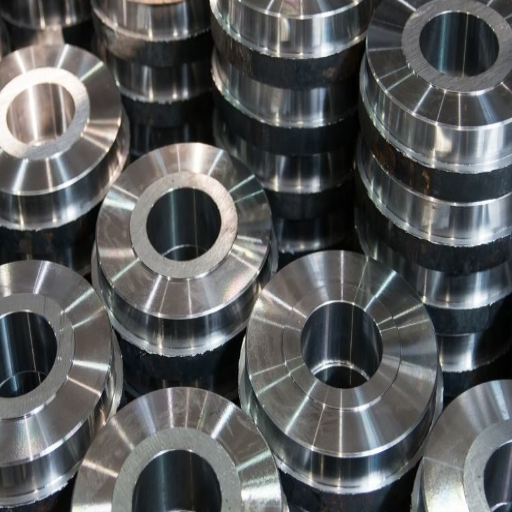
Advantages of Using Stainless Steel and Aluminum Together
- Complementary Strength and Weight Properties: Stainless steel provides tensile strength and durability, hence it is used for structural purposes, while aluminum’s lightweight qualities ensure a lesser weight for the assembly. For instance, if stainless steel were employed in load-bearing areas and aluminum in areas that are non-structural, an overall maximum weight reduction of 30% could be achieved without compromising integrity.
- Various Environmental Impacts on Corrosion Resistance: Both stainless steel and aluminum offer great resistance to corrosion in different environmental conditions. Stainless steel does not corrode when exposed to harsh chemicals or saline environments, whereas aluminum lets an oxide layer form naturally to protect it. It is this combination that makes it resilient to environments where moisture, salt, or chemicals abound, such as in marine or industrial settings.
- Thermal Efficiency: Aluminum provides high conductivity of heat, an important prerequisite for heat dissipation in cooling applications; stainless steel is strong at elevated temperatures and does not deform. By combining these materials, one can achieve good thermal management with high structural reliability in heat exchangers and industrial ovens.
- Paying Attention to Cost: To the extent that stainless steel is assigned to high-stress areas while aluminum bears the stress in low-impact applications, the cost of materials itself is greatly reduced. For example, a hybrid design offering aluminum integration in place of non-critical stainless steel could deliver a production cost reduction between about 15-20% relative to all stainless steel.
- Increased Fabrication Versatility: The stainless steel and aluminum pair allows a manufacturer to take advantage of more fabrication methods. Stainless steel can withstand welding and forming to develop durable products, and aluminum can be more easily machined or extruded into complex shapes. This level of versatility helps expedite manufacturing and minimize production waste.
Limitations of Each Material in Various Applications
- Stainless Steel: In the main, it is hard with its corrosion resistance; however, stainless steel is really highly dense when compared with many other alternatives, such as aluminum. This great density builds more weight, which is an adverse factor to be considered by industries such as aerospace or automotive, where minimizing mass is just great for efficiency and performance. On the other hand, certain finishing materials or advanced treatments relating to processing costs can be considered stainless steel very expensive, especially when dealing with high-grade stainless steel subjected to various environmental conditions, such as extreme temperatures or saline exposure. Its hardness can be either an advantage or a disadvantage. On account of high hardness, certain grades tend to be very difficult to machine, resulting in higher tool wear and increased manufacturing costs.
- Aluminum: Aluminum stands out for being lightweight and having high corrosion resistance due to the presence of its natural oxide layer, but lacks the strength and durability of stainless steel. This ultimately makes aluminum even less acceptable where applications demand high structural strength or resistance to surface wear, for example, heavy machinery or infrastructure. Moreover, aluminum tends to be vulnerable to fatigue and deformation even under trace loads, especially over time when subjected to heavy loading. Yet, in a corrosive environment where galvanic corrosion is played against the provokes corrosion-the oxide protection layer-on aluminum than other metals can occasion early failure unless proper engineering measures are put in place.
With an understanding of material-specific limitations, engineers can be able to make the right choice to optimize performance, cost, and longevity depending on the requirements of their intended application.
Cost Considerations: Choosing Between Stainless Steel and Aluminum
Many factors must be kept in mind while weighing the cost implications between stainless steel and aluminum, such as the price of the raw materials, fabrication charges, and lifecycle expenses. Stainless steel generally carries a much higher material cost in view of the incorporation of alloying elements such as chromium, nickel, and molybdenum. As a result of these elements, the metal has a higher corrosion resistance and greater mechanical properties, both of which contribute to its increased cost. Aluminum, on the other hand, being considered generally less expensive as a raw material, enjoys benefits from lower densities and is thus cheaper to transport and handle in large applications.
Fabrication processes-welding, machining, and forming-must also weigh differently toward the cost of the two materials. Stainless steel tends to require special tooling and methods due to its hardness and work-hardening tendencies; therefore, processing costs are high. Aluminum is generally cheaper to fabricate, considering the factor of weight and machining of the material, but it may need additional surface treatments to combat corrosion in a severely aggressive environment.
Apart from maintenance and durability in the longer run, these are also the ingredients for cost analysis. Stainless steel, in most cases, requires very little maintenance owing to the self-healing chromic oxide layer. Aluminum, on the other hand, will probably require regular checking of its coating to prevent galvanic corrosion, particularly in settings where it is prone to corrosion or heavy wear. Ultimately, the choice between these two rests on the performance requirements, cost, and expected operational life of the project.
Best Practices for Working with Metals
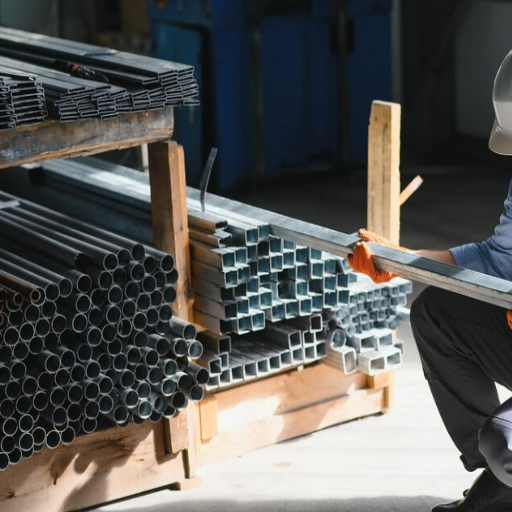
Welding Techniques for Stainless Steel and Aluminum
When welding stainless steel, one must make sure that the choice of filler material does not compromise the corrosion resistance or the mechanical properties of the stainless steel. Being the most commonly welded stainless steel, austenitic stainless steel suffers from distortions due to improper heat control or chromium carbide precipitation that weakens its corrosion resistance. GTAW and GMAW are hence considered the best methods due to their high level of control over the heat input and their ability to create clean welds. Shielding gases mostly use argon or an argon-helium mixture to protect the weld against atmospheric contamination.
However, welding aluminum demands a different set of treatments, keeping in mind the material’s properties like high thermal conductivity and its oxide layer. The oxide layer must be removed thoroughly before the actual welding process, since it has a much higher melting point than aluminum. Brushing with a stainless steel wire brush or using chemical cleaners might do the trick. GTAW and GMAW are widely used for aluminum welding, but heat input must be carefully controlled to avoid porosity formation. Shielding gas applications for aluminum usually include pure argon, though an argon-helium mixture might be used for thick materials.
In summary, becoming proficient in the welding of any given material requires a thorough understanding of each weldable material and the challenges they present. Stainless steel demands strict heat control and filler selection so as to maintain its structural and corrosion resistance properties. Aluminum, on the other hand, requires pre-weld surface preparation and exact control of its thermal conductivity for defect-free welds. Using such guidelines, engineers and fabricators can ensure that the welds established are sound and durable in a manner suitable for that particular application.
Machining Tips for Optimal Performance
For performing machining tasks efficiently, every aspect must be taken into consideration, such as tool selection, speed of cutting, and material properties. The cutting tool must be selected based on proper geometry and coating, as specialist coatings such as titanium nitride (TiN) could impart better lubricity, wear resistance, and enable longer tool life. Then the cutting speeds and feed rates must be set up and selected concerning the materials concerned; cold hard materials that may be tough and slow to adversely affect the tool are handled under slow cutting speed, and feed; on the other hand, some ductile materials can be processed with relatively high speeds.
Tighter tolerances will necessitate advanced programming and machine calibration techniques. Nowadays, CNC machines operate adequately with sensors for precision control, supported by advanced adaptive CNC controls that can dynamically adjust against disturbances arising during machining. In addition to these, efficient evacuation of chips with coolant application helps to avoid the heating map and deformation of the material. Using high-pressure coolant can also foster faster rates of material removal while increasing tool life and improving surface finish.
Employing cutting-edge tooling technologies, constant monitoring during machining processes, and state-of-the-art material-based approaches can really result in machinists significantly improving the efficiency and accuracy of their operations while reducing the costs thereof.
Maintenance Practices for Longevity
To optimize performance and ensure a longer operational life for machinery and tools, proper maintenance practices should be adopted. Keeping a preventive maintenance angle with the scheduled inspection and servicing activities is very important. Such a model includes periodic lubrication, replacement of components susceptible to wear, and cleaning of debris or contaminants from mechanical systems. This prevents equipment wear caused by the build-up of stresses or from overheating due to friction, thus enhancing durability. Besides this, maintenance under the manufacturer’s guidelines would ensure that the machinery continues to work under optimum conditions and has no unscheduled breakdown.
Another advanced method is condition-based maintenance (CBM), which takes into account real-time monitoring and diagnostic mechanisms that determine the health of the equipment. At different points, parameters including vibration levels, temperature, acoustic emissions, and residual life expectancy are measured by sensors and analytical tools, and operators interpret these data sets to prognosticate the failing points way ahead of time and take appropriate action to minimize downtime while lowering repair costs. This approach makes sure that machinery is not unnecessarily serviced or neglected, thus efficiently balancing resources and labor.
The introduction of modern technology, such as the IIoT and AI, can thus bring the maintenance schemes to the next level in terms of efficiency. By having IIoT-based devices continuously monitor and report real-time operating data to centralized systems, it brings opportunities to perform interventions before a failure takes place. AI-augmented decision support can then use this data to single out potential anomalies and recommend remedial actions, greatly reducing the inherent human error and delays tied up with manual decision making. With crisp monitoring tools and cutting-edge analytics working hand in hand, industrial enterprises will be able to provide for the longevity of their machinery, enhanced productivity, and reduced operating costs while enjoying the benefits of being at the forefront of innovation.
References
-
“Stainless steels for design engineers”
This book provides a comprehensive understanding of stainless steel, including its applications and comparisons with other metals like aluminum. -
“The history of stainless steel”
This source delves into the development and applications of stainless steel, offering insights into its relationship with other materials like aluminum. -
“Stainless steel in construction: A review of research, applications, challenges and opportunities”
Published on ScienceDirect, this article reviews the use of stainless steel in construction and its interaction with other materials, including aluminum.
Frequently Asked Questions (FAQ)
Q: What is the difference between aluminum and stainless steel in terms of corrosion resistance?
A: The main difference between aluminum and stainless steel lies in their resistance to corrosion. Stainless steel, particularly grades like 304, is less likely to corrode when exposed to harsh environments compared to aluminum, which can react and corrode more easily, especially in the presence of moisture.
Q: Can stainless steel fasteners be used with aluminum?
A: Yes, stainless steel fasteners can be used to secure aluminum components, but care must be taken to mitigate the effects of galvanic corrosion. When stainless steel comes into contact with aluminum, it can create a galvanic cell, which may lead to accelerated corrosion in the aluminum.
Q: How do you secure aluminum to stainless steel?
A: To secure aluminum to stainless steel, it is best to use bolts or screws made from stainless steel. It is also advisable to use washers or isolation materials to prevent direct contact and reduce the risk of corrosion.
Q: What are the effects of galvanic corrosion when using aluminum and stainless steel together?
A: The effects of galvanic corrosion can be significant when aluminum and stainless steel are used together. If these two metals are in contact, the aluminum can corrode faster due to the more noble nature of stainless steel, which can lead to structural issues over time.
Q: Are there specific applications where aluminum and stainless steel are commonly used together?
A: Yes, aluminum and stainless steel are often used together in construction and automotive applications. For example, stainless steel screws and bolts are commonly used to secure aluminum roadway structures, providing strength while minimizing the risk of corrosion.
Q: Is it safe to use stainless steel screws with aluminum rivets?
A: It can be safe to use stainless steel screws with aluminum rivets if proper precautions are taken, such as using a barrier to prevent direct contact. This helps to mitigate the risk of corrosion and prolongs the lifespan of the assembly.
Q: What precautions should be taken when using stainless steel and aluminum in outdoor environments?
A: When using stainless steel and aluminum in outdoor environments, it is crucial to isolate the two materials to prevent galvanic corrosion. Using a sacrificial anode or applying protective coatings can help in mitigating the effects of corrosion caused by exposure to water.
Q: Can aluminum be attached to stainless steel in a way that minimizes corrosion risk?
A: Yes, aluminum can be attached to stainless steel in ways that minimize corrosion risk. Utilizing the strongest fasteners, ensuring proper surface preparation, and applying protective barriers are effective methods to reduce the likelihood of corrosion when these two metals are used together.

